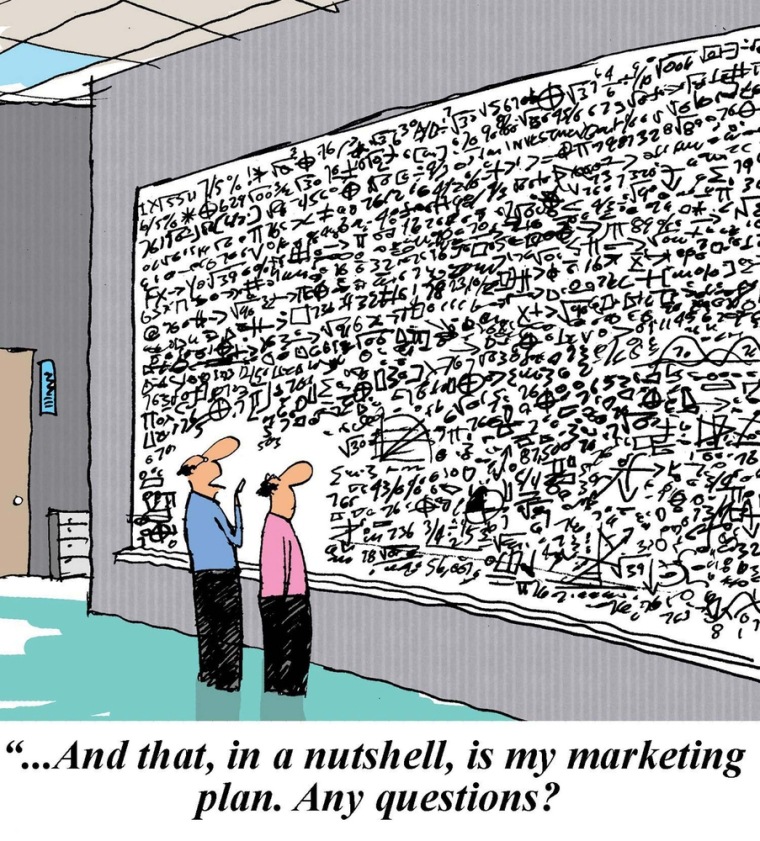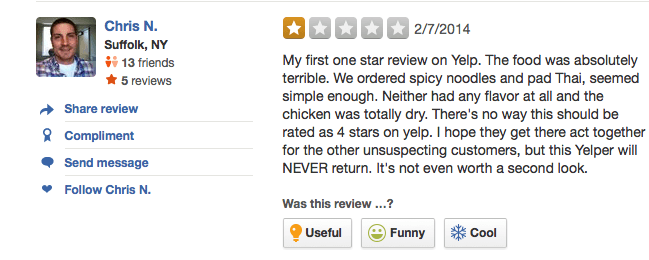Developing an excellent online reputation means doing more than simply talking endlessly about how wonderful your company is. If you’re the only one doing the talking, and you have a vested interest in seeing your company succeed, chances are your words will be taken with more than just a grain of salt. In fact, your readers might be willing to get out the whole salt shaker, discrediting everything you have to say.
That means prompting other people to talk should be a cornerstone of any company’s reputation management strategy. And, lucky for you, I’ve pulled together five tips to help you get people talking about how great your company really is.
So let’s get started.
 1. Encourage Sharing
1. Encourage Sharing
We all know online reviews on sites like Yelp and Angie’s List have a lot of power. But, it might shock you to learn that only a few people choose to share their thoughts on social media. In fact, some studies suggest that less than 30 percent of consumers feel compelled to write reviews, even though more than 80 percent say the reviews they read influence the decisions they make.
Think about this: The majority of people read and use reviews, but only a small number of people write those reviews. Flipping those numbers around could mean building up a great reputation in a small amount of time.
Companies who do this badly could end up in hot water, as Yelp’s rules explicitly ban the practice of soliciting good reviews. You can’t just ask people to write-up great notices about your company in return for coupons or money or freebies. If you do, you’ll get penalized. That’s a fact.
But what you can do is encourage a culture of sharing. Remind your consumers that you participate on review sites. Put that on your website. Put stickers on your office doors. Write blogs about it. Print it on your receipts. Asking people to share their thoughts, whether good or bad, is totally kosher. And if you deliver good service, it’s likely that most of the reviews you’ll get will be positive.
2. Support Repeat Business
Consumers who dislike you or your company might visit you just once, and leave the transaction in a huff, vowing never to come back. We’ve all seen reviews like this one.

This guy is never coming back to this restaurant, even if things get better.
But consumers who like your business, or who are at least indifferent to it, might very well come back over and over again. And they might be all the more likely to come back if you give them some kind of reminder or prompt to do so.
Coupons are an excellent tool to use here, as a September study suggests that 96 percent of consumers in the United States utilize them. Now, I’m not advocating the use of a big, easy-to-mess-up coupon (like Groupon, which some bloggers suggest is responsible for a great deal of consumer frustration). I’m talking about a very small, easy-to-control coupon that might encourage repeat business from consumers that already know about you. A push like this might involve:
- An event discount for users who sign up via Facebook
- Free shipping for consumers who use a specific word you unveil via Twitter
- A small discount shared at the bottom of a consumer receipt, good for the next visit
- A holiday-themed coupon available for the first 50 people who sign up for it
These are little, and consumers must be insiders to get them. It’s the sort of promotion that can push your already-somewhat-happy customers to interact with you again, and perhaps share stories of their savings with others.
3. Create a Loyalty Program That Works
I know, I know, this is very similar to offering coupons to consumers who have worked with you before. But there’s a slight difference, as loyalty programs aren’t based on an event or a time. They’re perks that repeat customers always get, no matter what, and they can transform ho-hum customers into zealots in no time.
There are lots of ways to do loyalty programs incorrectly, including providing perks that are time-limited, or including rewards that are just too small to make anyone happy. Decisions like this are common, and they might be the reason why a study from Colloquy and FanXchange suggests that 54 percent of consumers are unhappy with the programs they’ve signed up for.
Research is likely to be your best friend here. Survey your current customers and find out what sorts of perks they might use and what would help them to feel compelled to share your rewards program with their friends and contacts. Polling your consumers can help you design a program that works, and it can also help consumers to feel invested in your company and that could benefit your company in other ways as well.
4. Create a Shared Environment
Interacting with your consumers on a one-on-one basis is a great way to develop brand loyalty. But, creating a booming community where loyalists can interact with one another, and with company representatives, could help to amplify your message.
Facebook pages, despite algorithm changes that reduce your organic reach, remain an effective tool for community building. Devoted consumers can search for your company and see your content, even if it isn’t delivered directly to their news feeds. You’ll just have to give them a reason to go there.
What does that mean? Developing excellent content that consumers want to participate with is vital.
Consider doing something big, like Heinz did a few years ago with the personalized bean contest. Or just focus on creating one excellent post, with a great photo or compelling text, for consumers to see each day.
If Facebook isn’t your thing, or you just don’t like working with a company with ever-shifting rules, there are other novel approaches out there, including:
- Google+ hangouts
- Pinterest contest pages
- Twitter chats
The idea is to find a medium in which users are compelled to share their own stories with other users. You’re creating a community here, and that can help to prove that many people like your company (not just you and your one loyal customer). And their talk can boost your company’s reputation.
5. Entice In-Depth Content Development
In addition to using social media channels to spur the sharing of short-form content (like a photo or an anecdote), look for ways to encourage your loyal consumers to talk at length about the wonders of your company or your product. Yep, I’m talking about looking for ways to connect with any professional bloggers that could help to share your brand message.
In a perfect world, you’ll know so much about your customers that you’ll know just who can talk coherently about you, and you’ll have a relationship that lends itself to easy sharing. In reality, you might need to do a little digging in order to find the right people.
There are a number of in-depth articles about finding good bloggers that are worth a read (this one from the Jeff Bullas’ website is a particular favorite of mine), but following steps like this can seem like a lot of work. Who has time to run searches for all bloggers, and then whittle those bloggers down, form relationships with them and then ask them to blog? Makes me tired to even think about it.
Scaling that down to a manageable size might mean just looking through your Facebook, Pinterest, and Twitter followers. Do any of them have blogs? Do those blogs read well? Do you know these people personally? That’s what I call “lunchtime research,” as it’s work you can do in fits and starts, and it’s not that unpleasant.
Once you have a few bloggers identified, open your pitch. Offer a sample or a coupon or some incentive, and ask them to cover your business on their blog. That’s it. You could get a lot of coverage in a very small amount of time.
Final Thoughts
The beauty of a program like this involves its low relative cost. There aren’t a lot of expenses involved in promoting your participation in review sites like Yelp, and working with bloggers might cost you little more than a token gift. When compared to a massive advertising campaign, this is the sort of program that seems pretty cheap.
But for those companies with real cost concerns, this is also a strategy that can be rolled out incrementally. A company might beef up social media sites one-quarter, work with bloggers the next and then develop a rewards program. There’s no harm in taking just a few small steps at a time.
Since a stellar online reputation is so important for overall brand success, companies really must at least do something. The cost of ignoring the issue are just too high.
I’ve covered a lot of ground here, so I wouldn’t be surprised if I missed something. Do you have tips to share? I’d love to see them in the comments section.
Image Credits
Featured Image: Sergey Nivens via Shutterstock
Image #1: Cartoonresource via Shutterstock
image #2: Screenshot from October 16, 2014





